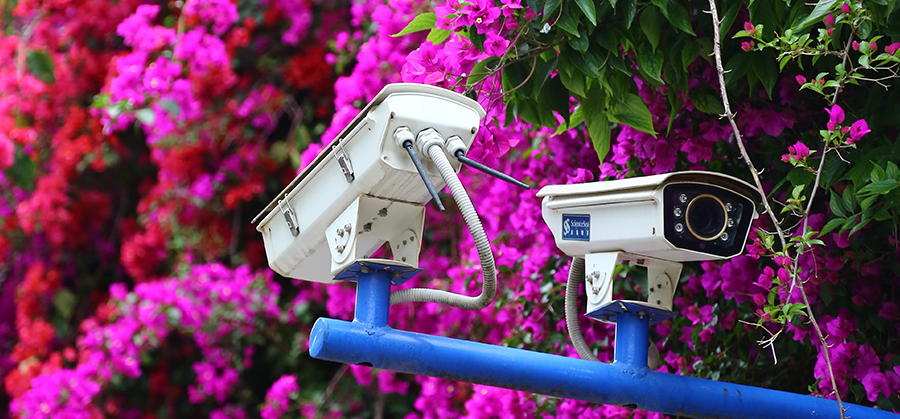Reasons Why Cameras Fail

In an era where photography has become an integral part of our lives, the cameras fail can be a frustrating and disheartening experience. Whether it’s a professional DSLR or a smartphone camera, the malfunction of these delicate devices can leave us feeling disconnected from our memories, moments, and creative pursuits.
The reasons behind camera technical malfunctions become multifaceted, stemming from technical glitches and human error. In this article, we will delve into the primary causes of security camera failure, shedding light on the intricacies of these devices and the factors that can lead to their malfunction.
1. Mechanical Issues
Cameras are intricate pieces of machinery with numerous moving parts. Over time, wear and tear can take a toll on these mechanical components. Shutter mechanisms, autofocus systems, and zoom lenses are particularly vulnerable to malfunction due to physical stress. Dust and debris can also find their way into the camera body, affecting its performance and potentially causing sensor spots and other imperfections in the captured images.
2. Electronic Malfunctions
Modern cameras heavily rely on electronic components to function efficiently. Circuitry and wiring can degrade over time, leading to issues such as power failures, sensor failures, and problems with the LCD screen. Electronic glitches may result in the camera not turning on at all or freezing while in operation.
3. Sensor Problems
The image sensor is the heart of any camera, be it a compact point-and-shoot or a high-end DSLR. Any defect or physical damage to the sensor can severely impact image quality. Dead pixels, sensor overheating, and even permanent sensor damage from prolonged duration of exposure to intense light are sensor-related issues that can result in camera failure.
4. Software Glitches
As cameras become more technologically advanced, they often incorporate complex software systems to manage various functions. Software glitches can lead to errors such as incorrect exposure, incorrect settings, autofocus problems, or crashes that render the camera inoperable. Updates and patches may help mitigate some of these issues, but they don’t always eliminate the possibility of software-related failures.
5. Battery and Power Issues
Cameras require a steady power source to function correctly. Battery issues problems, such as inadequate charging, faulty battery connections, or degraded battery life, can lead to unexpected shutdowns or not charged properly with power-up failures. Power surges, whether from improper charging or external factors, can also damage the internal components of a camera.
6. Lens Errors
Lenses play a crucial role in image quality, and any issues with them can result in disappointing results, leading to lens problems. Autofocus failures, zoom mechanisms getting stuck, or problems with lens alignment can all lead to the camera being unable to capture clear and focused images.
7. Exposure to Environmental Factors
Cameras are often subjected to various environmental conditions, from extreme temperatures and humidity to dust and water exposure. These external factors can accelerate the deterioration of the camera’s mechanical and electronic components. Moisture can lead to corrosion, while temperature extremes can cause internal components to expand or contract, affecting the camera’s overall performance.
8. User Error
Sometimes, the reason for camera installation failure lies with the user. Incorrect handling, dropped the camera, exposing it to harsh conditions, or forcefully inserting/removing accessories like memory card errors can all lead to damage or malfunction. Ignoring manufacturer guidelines for improper maintenance and usage can also contribute to camera failure.
9. Connectivity Complications
Modern cameras often have wireless connectivity features such as Bluetooth, Wi-Fi, and NFC to seamlessly transfer photos and remote control via smartphones or other devices. Connectivity issues can arise due to firmware conflicts, compatibility problems, or interference from other electronic devices. These issues can hinder the camera’s ability to establish a stable connection and transfer data effectively.
10. Firmware Failures
Camera manufacturers periodically update the firmware to avoid firmware issues to enhance performance, introduce new features, and fix known bugs. However, if the firmware update process is interrupted or not executed correctly, it can lead to corruption. This corruption can result in erratic behavior, system crashes, or even render the camera inoperable.
Conclusion
In technology, failures are an inevitable part of the journey, and cameras are no exception. The intricate interplay of mechanical, electronic, and software components, external factors, and human error creates a landscape where camera failures can occur for many reasons. Staying informed about proper camera maintenance, adhering to usage guidelines, and investing in quality equipment can all minimize the risk of camera failure and ensure that these devices continue to capture cherished moments with clarity and precision.

